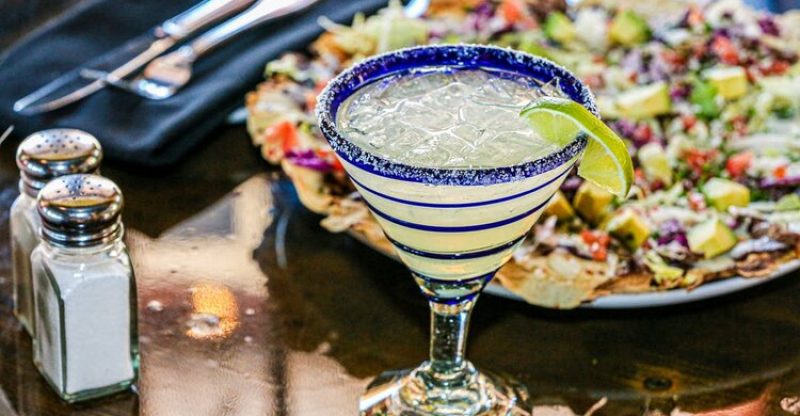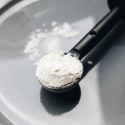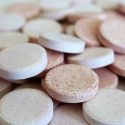What is Potassium Ferrocyanide (E536) in Salt and is it Dangerous?

Production | Uses | Safety
Potassium ferrocyanide (trihydrate) also known as yellow prussiate of potash with the chemical formula K4Fe(CN)6 · 3H2O. Like sodium ferrocyanide, it is a cyanide salt used as an anticaking agent in table salts to prevent salt granular lumping. It has the European food additive number E536.
It is totally different with potassium ferricyanide or potassium hexacyanoferrate(iii), which is an oxidizing agent (iron state Fe3+) commonly used in blueprint drawing, metal treatment and photography instead of in salt.
How is Potassium Ferrocyanide Made?
It is produced by reacting sodium ferrocyanide with calcium hydroxide and potassium carbonate, with the following reactions:
- Na4Fe(CN)6 + 2Ca(OH)2 → Ca2Fe(CN)6 + 4Na(OH)
- Ca2Fe(CN)6 + 2K2CO3 → K4Fe(CN)6 + 2CaCO3
K4[Fe(CN)6].3H2O can also be made from the reaction between calcium cyanide and iron(II) sulfate at a temperature above 100°C: 3CaCN2 + FeSO4 → Ca2Fe(CN)6 + CaSO4
And then adds potassium chloride to precipitate the mixed calcium-potassium salt CaK2[Fe(CN)6], which then reacts with potassium carbonate to obtain K4Fe(CN)6 solution. The three water crystals form (trihydrate) is obtained by rapid cooling. (1)
Properties
Odorless lemon yellow crystals, with a bitter and salty flavor. The lemon yellow color comes from ferrocyanide anion ([Fe(CN)6]4-) and iron, iron is in the state of Fe2+.
| Other names | Yellow prussiate of potash, potassium hexacyanoferrate ii, tetrapotassium hexacyanoferrate(4–)trihydrate |
| CAS number | 14459-95-1 |
| Chemical formula | K4Fe(CN)6 · 3H2O |
| Molecular weight | 422.4 |
| Solubility | Soluble in water, insoluble in ethanol |
What are the Uses of Potassium Ferrocyanide?
It is commonly used in table salts, also can be used to remove the heavy metal content (e.g. to reduce copper and iron in wine production), production of blue pigments (iron blues), and so on.
Table salts
After a period of storage, the salt will change from its original loose state to a hard lump due to the uneven granularity and hygroscopicity property. It is the common phenomenon of salt agglomeration. The agglomeration makes salt transportation and uses inconvenient.
Potassium ferrocyanide can be used as an anticaking agent to improve the fluidity or free-flowing of the salt, and avoid the problem of agglomeration. It is added by spraying and a very low usage can have a good anti-caking effect.
The main two types of edible salts are refined salt and solar salt. Generally, it is not necessary to add anti-caking agents to the latter due to the large particle size, which is not easy to agglomerate. While refined salt has fine particle size, which is easy to lump, so a certain amount of the anti-caking agent is needed.
Is Potassium Ferrocyanide Safe to Eat?
Together with sodium ferrocyanide and calcium ferrocyanide, potassium ferrocyanide has almost no side effects when used in table salt as a food additive. It has been approved by the European Food Safety Authority (EFSA), Joint FAO/WHO Expert Committee on Food Additives (JECFA) and other authorities.
Some people may be afraid that it is dangerous to our health due to the toxic cyanide in it and potassium cyanide will be released during cooking. However, the chemical bond between iron atom and cyanide in potassium ferrocyanide is stable and strong.
Potassium ferrocyanide can only be decomposed to potassium cyanide at a higher temperature than 400°C, the cooking temperature is much lower than this temperature to break it down.
If you still have the safety concerns of this ingredient, you can choose other anticaking agents alternatives such as silicon dioxide, sodium silicoaluminate and calcium silicate.
EFSA
Potassium ferrocyanide (E536) is listed in Commission Regulation (EU) No 231/2012 as an authorised food additive and categorized as “additives other than colours and sweeteners”. Food grade ferrocyanides are only approved in salt and salt substitutes with the maximum level 20 mg/kg (expressed as potassium ferrocyanide anhydrous). (2)
JECFA
Function class: food additive, anticaking agent. (3)
Acceptable daily intake: ADI “0-0.025 mg/kg bw” set in 1974. (4)
Conclusion
Now you may have an understanding of the food additive – Potassium Ferrocyanide (E536), from production, purpose in table salts, the safety of cyanide in it. Have you found this anticaking agent in your salts? Let me know in the comments.



I am curious to know why this additive was first used. It has a pretty scary name despite the cyanide ion being complexed. Some tap waters have a reasonable Ferric content from natural contamination,would a solution of table salt be blue in such water?
Hi Daniels,
The color of Ferric is red, please not to be confused with potassium ferricyanide.
Hello
I have one question please tell me which one is better that we use in iodized salt ?
Potassium Ferricyanide?
Sodium Ferricyanide?
I am confused that which one is better and don’t change the salt color after using
Please help me for choosing best one .
Thank you
You wrote that Potassium ferrocyanide can only be decomposed to potassium cyanide at a higher temperature than 400°C.
Considering this info:
“It is slightly toxic, since adding acid to an aqueous solution releases toxic hydrogen cyanide gas.”
What about stomach acids?? Thank you 🙂
Better not to use any free flow salt. Definitely the potassium ferrocyanide is dangerous to health. Use unrefined sea salt.
This additive is in Kalas iodized sea salt from Greece. I threw i out.